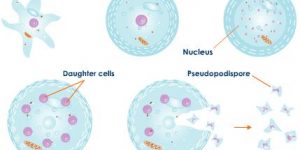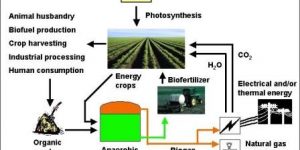Solar Energy at Home; Benefits and Importance
There are certain things that we can do that can benefit the environment, as well as providing a benefit for ourselves personally. For example, keeping plastic bottles in separate trash receptacles creates more space in your regular trash can and allows you to save money on trash bags; but it also allows those bottles to […]
Fossil Fuels – How They are Made & What is Happening to Them?
Fossil fuels are a hugely important source of power and have increasingly been so since the Industrial Revolution. They include coal, gas and petrol. They fuel most of the world’s electricity generating stations, petrol-driven and diesel-driven cars, lorries, buses, jets, trains and ships and countless industrial plants. How Fossil Fuels are Made? Fossil fuels are […]
How Do Kaleidoscopes Work?
Their working method is similar to the one of mirrors, but they display a reflection. The most basic kaleidoscope is made of two mirrors and a 30-degree wedge. Holding the kaleidoscope differently will change the wedge’s position and the light will hit the mirrors under a different angle. This causes a variety of colors and […]
Composition of Blood
Blood is an essential part of the body of every human and most animals and insects. This is a liquid which is red in color. Blood is a living tissue which constantly circulates throughout the human body. Blood contains two main components: 1- Blood Cells 2- Blood Plasma Blood plasma is nonliving, pale yellow, intercellular […]
Different Types of Glass We Use Everyday
1- Soda (Soft) Glass This is the most ordinary type of glass and it is often called soft glass. This type of glass is made by melting sand, quick lime and soda ash. This type of glass is used to make dishes, bottles, tumblers, mirrors, light bulbs, windows, etc.
Twinkling of Stars
Why Do Stars Twinkle? Because of the difference in densities among the layers of atmosphere, the density of the atmosphere as a whole is not consistent. The layer at a higher altitude is less cold and denser than the layer present at a lower altitude. Because of this as we go upwards, the refractive index […]
Spore Formation
A large number of bacteria or fungi frequently use the process of spore formation as a means of reproduction. During this process, a filamentous structure called sporangium is formed from fungal hypha. A large number of nuclei are produced when nucleus in sporangium gets divided. Each of the nucleuses then gets enclosed with cytoplasm resulting […]
REGENERATION
The ability of an organism to regenerate its lost body parts is called regeneration. When a part of the body of an organism gets damaged or crushed, a new identical part starts to develop from the point of damage some time after. Thus, all newly formed portions grow into fully functional organs or body parts lost […]
Vegetative Propagation
The formation of a new plant from stem, root or leaf is known as Vegetative Propagation. This procedure of regeneration is often seen among higher plants. Examples: (i) Germination of onion bulb (ii) Germination of potato tuber stem.
LAYERING
In layering, a branch of stem of a plant is bent downwards facing the soil in such a away that half of the branch gets buried in the soil while the tip remains exposed outside the soil. The half covered in soil evolves into roots. After separating from the mother plant, this part of the branch […]


